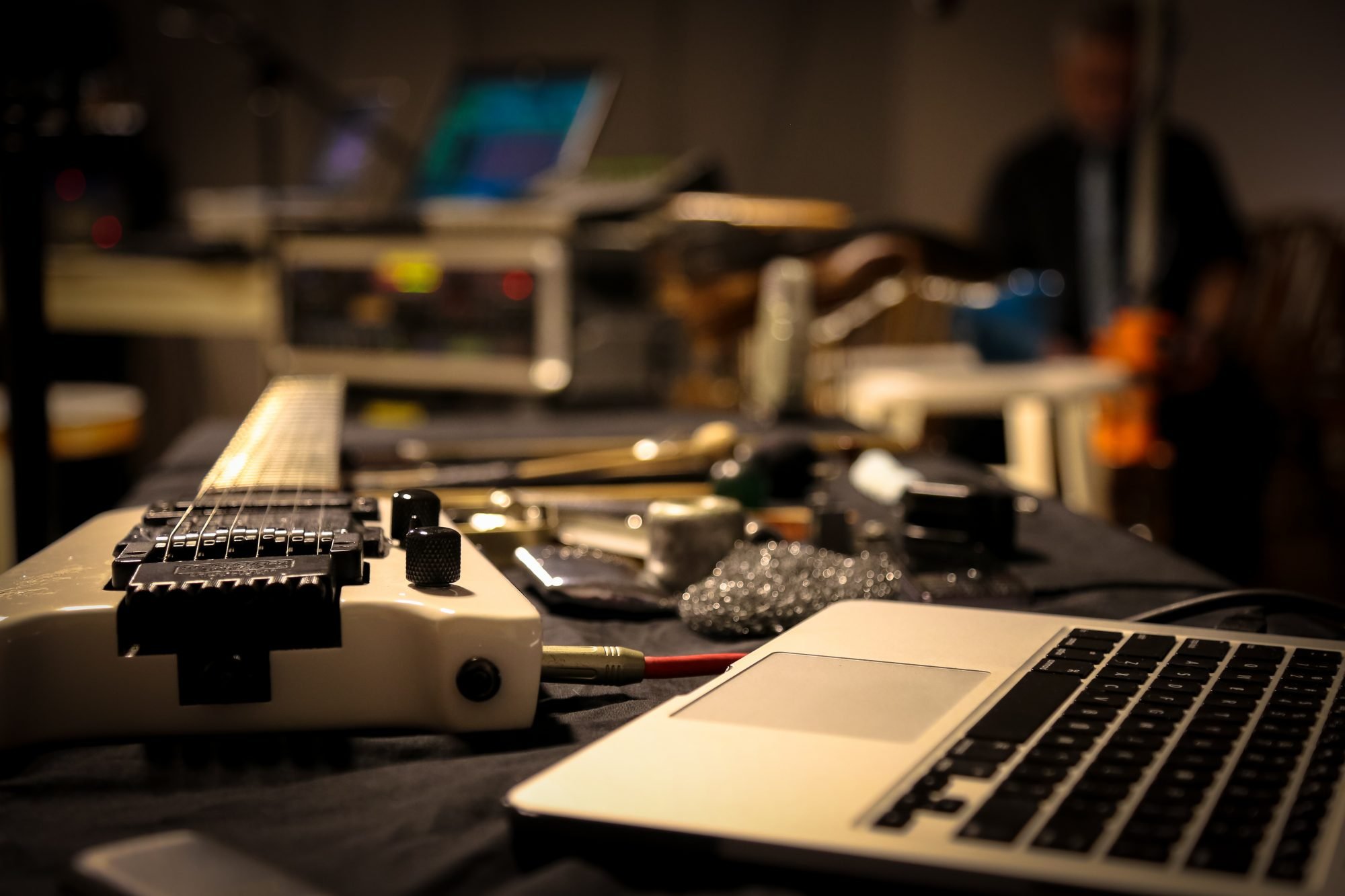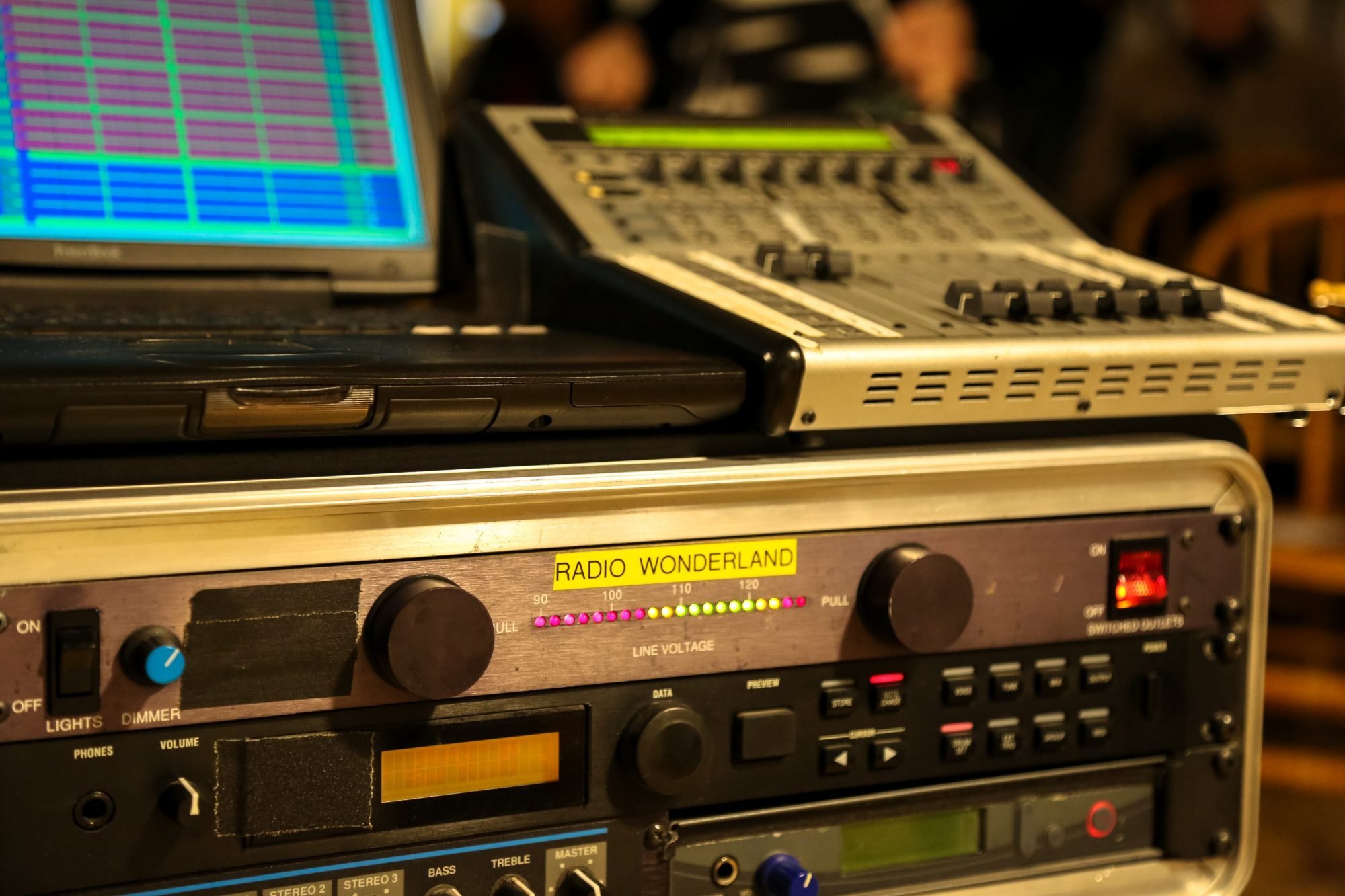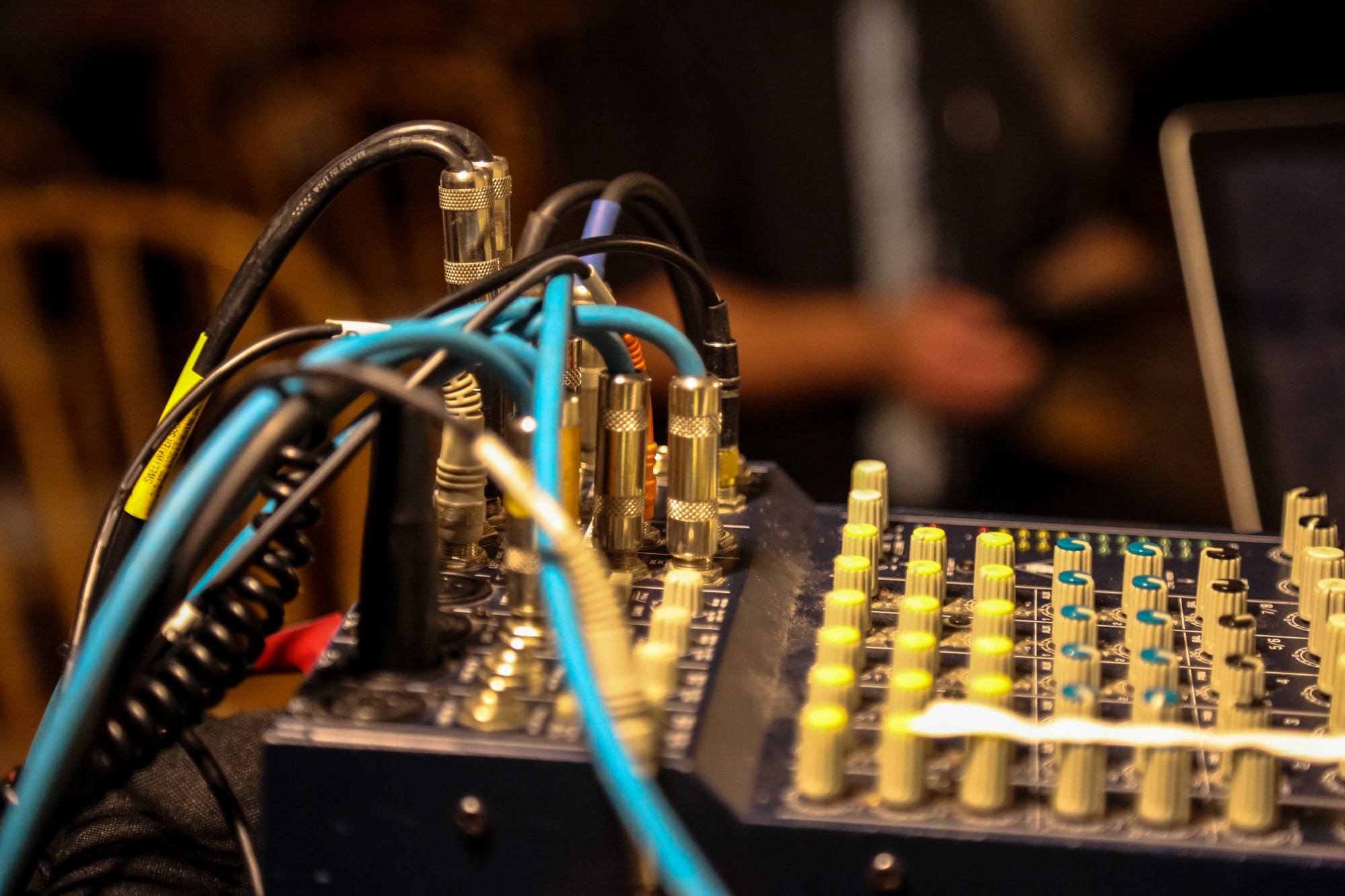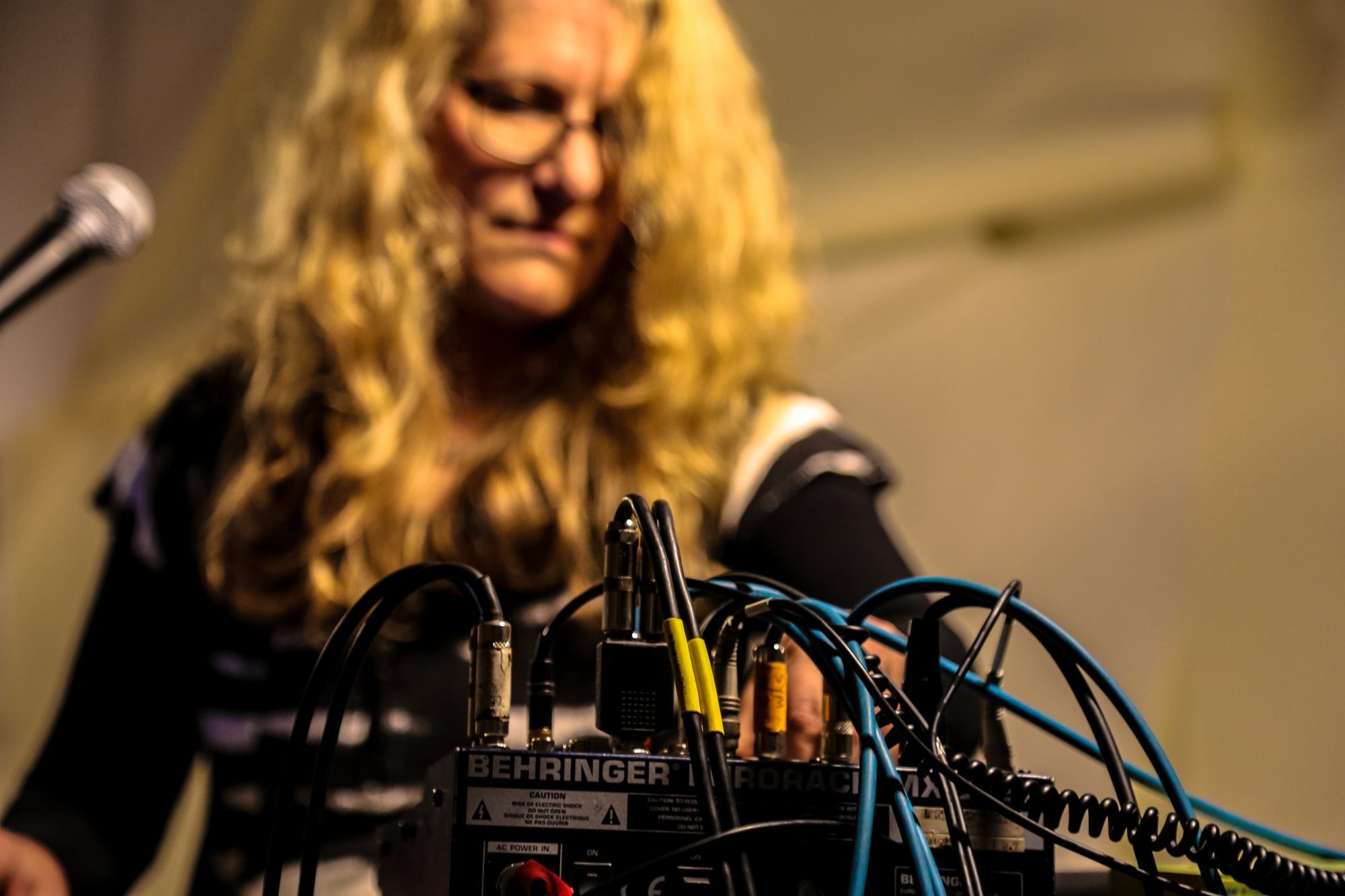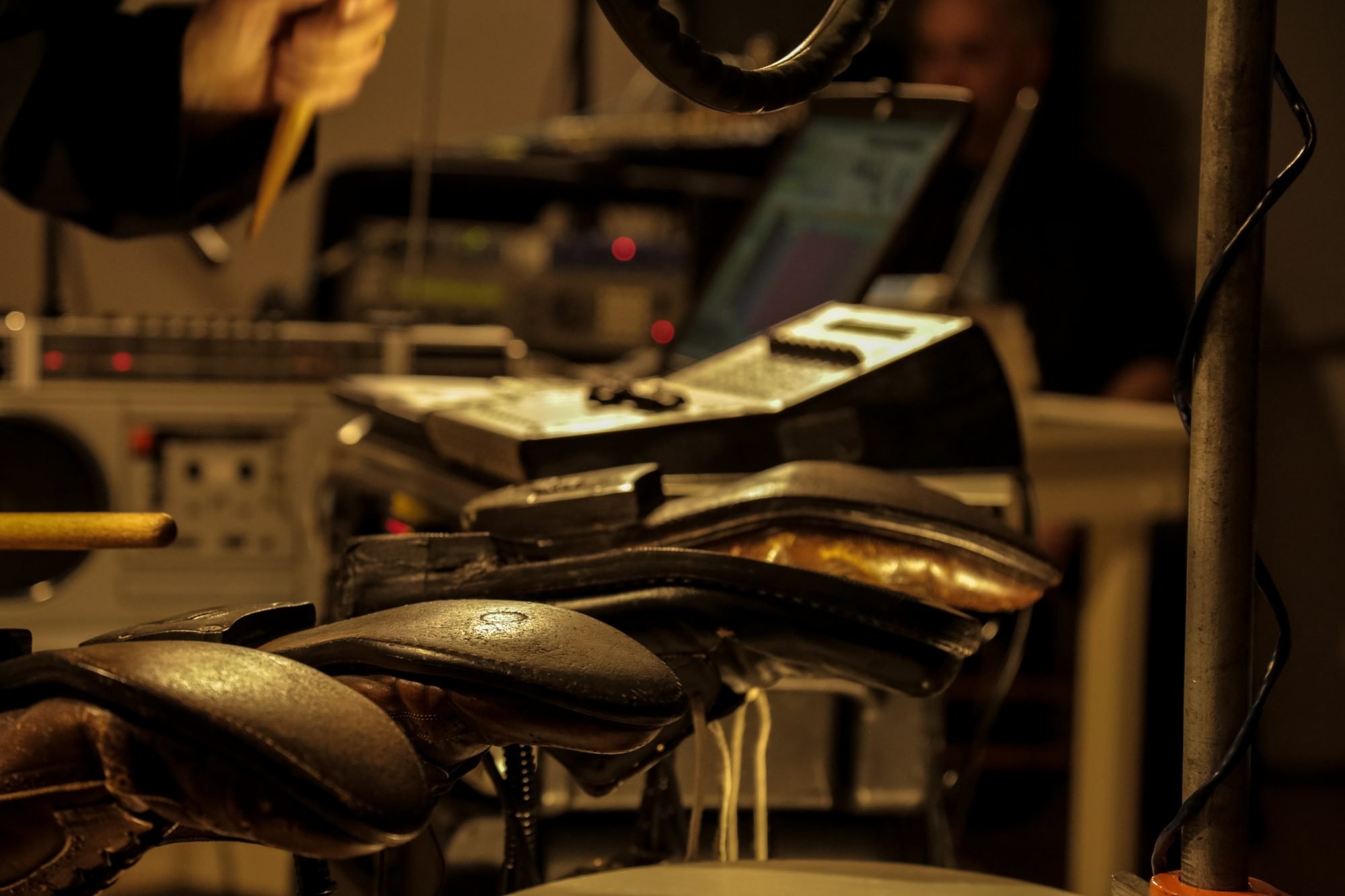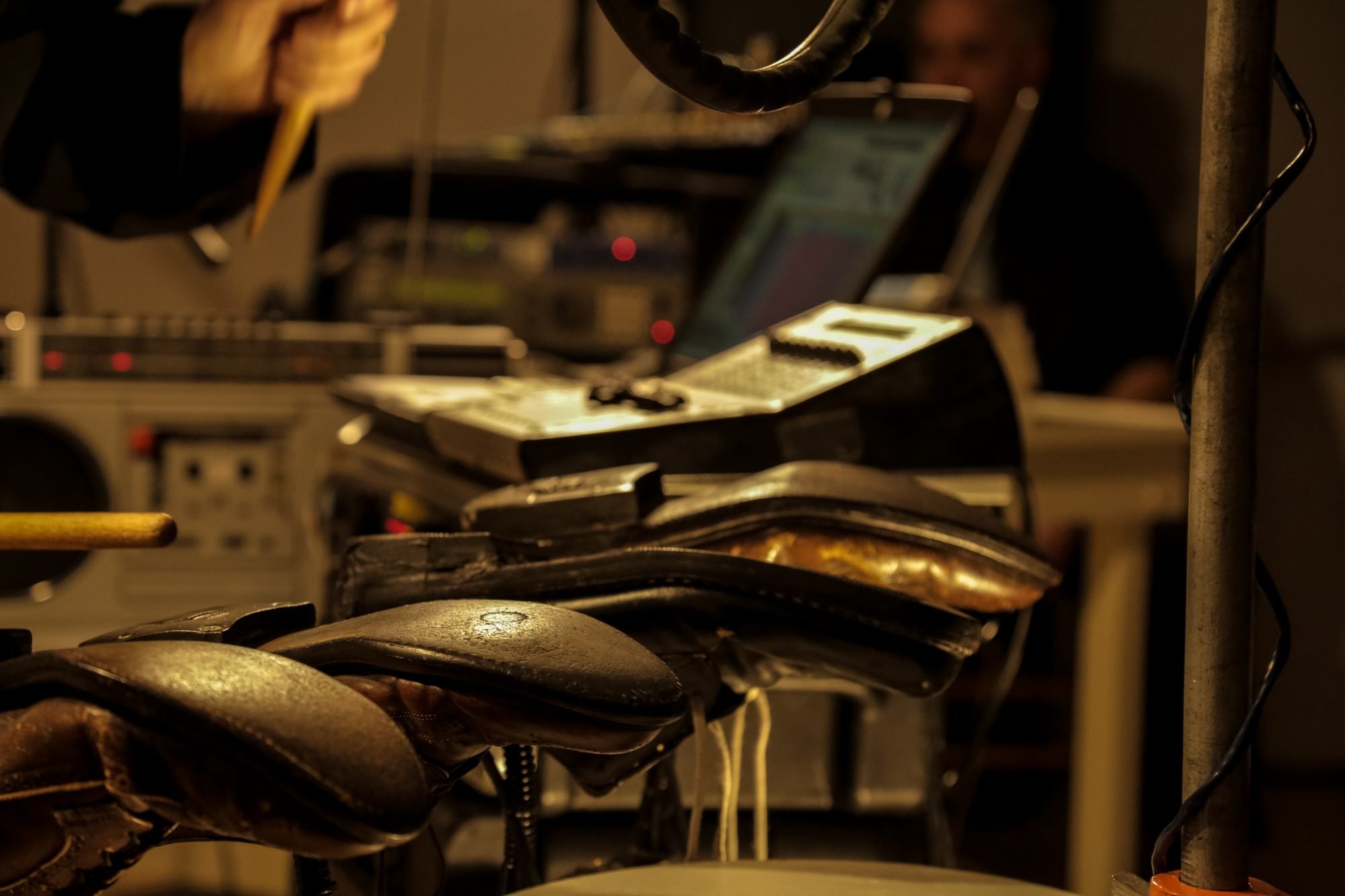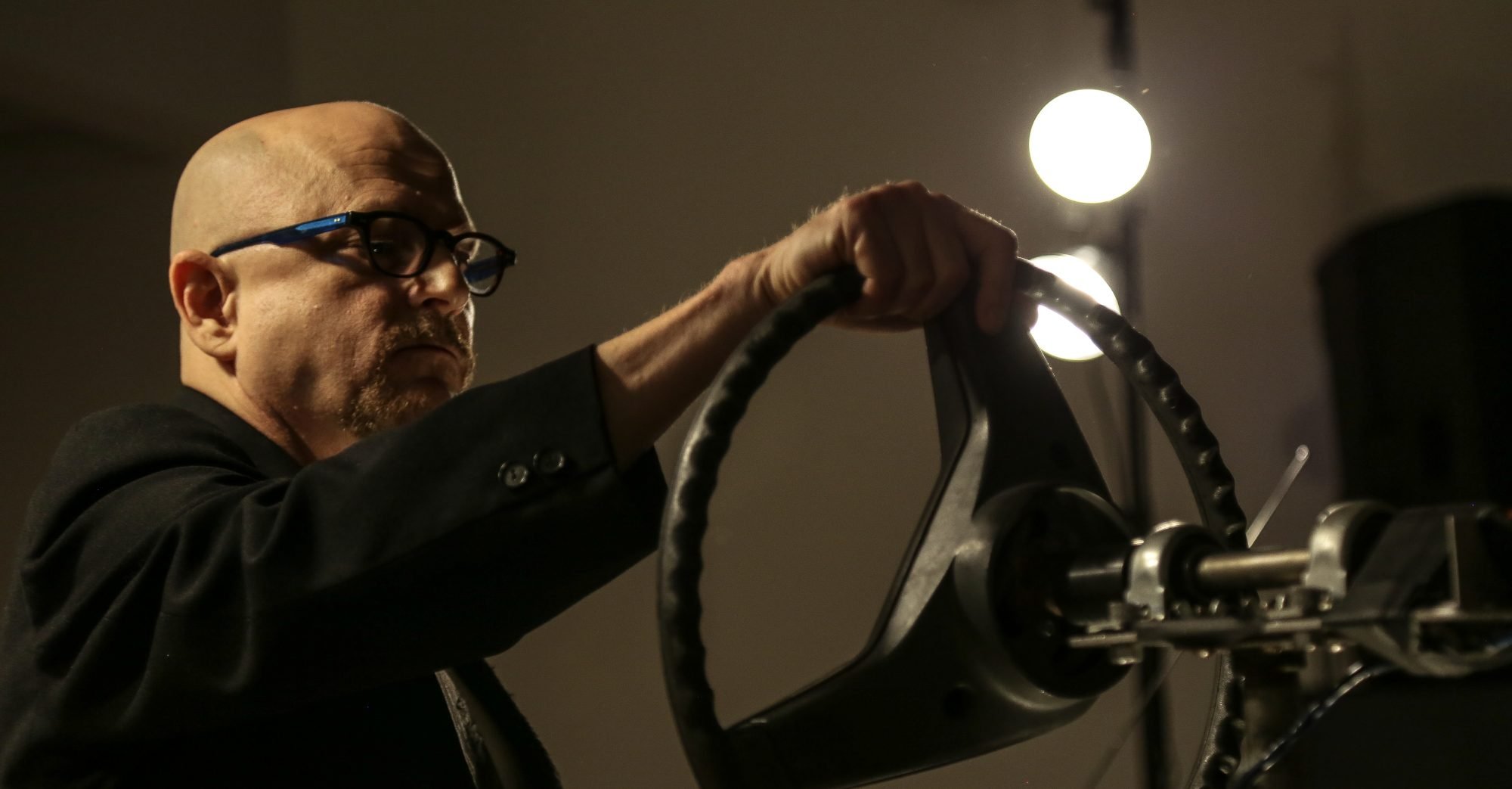Curated by Michelle Jaffé, Soul Junk Live brings three longtime pillars of New York City's downtown experimental music scene to MAB. This will be an event of high-energy data sonification, spatial digital processing, and dance grooves made out of live radio. Dafna Naphtali will perform the world-premiere of a work for voice and electronic sound processing. RADIO WONDERLAND will stage recombinant techno media subversion abetted by a Buick steering wheel, old shoes hit with sticks, and a trusty boombox. Hans Tammen will present a sonification of genetic data interpreted through digital processing, analog electronics, and virtuosic free-improvization. No charge, limited seating, runtime approximately 1 hour.
Dafna Naphtali is a sound-artist/ improviser/composer from an eclectic musical background. As a singer/guitarist/electronic-musician she performs and composes using her Max/MSP programming for sound processing of voice and other instruments, and also interprets the work of Cage, Stockhausen and contemporary composers. She has collaborated/performed with many experimental musicians and video artists over the past 20 years, such as Ras Moshe, Kathleen Supové, Lukas Ligeti, David First, Joshua Fried, and Hans Tammen as well as video artists (such as Benton-C Bainbridge, Angie Eng, Lenore Malen) and with choreographer Daria Fain. She’s co-led the digital chamber punk ensemble, What is it Like to be a Bat? with Kitty Brazelton since 1997 and was a founder of Magic Names vocal ensemble (performing Stockhausen’s Stimmung). She’s received commissions and awards from NY Foundation for the Arts (2001, 2013), NY State Council on the Arts, Meet the Composer, Experimental TV Center, Brecht Forum, and residencies at STEIM (Holland), Music OMI and iEAR at Rensselaer Polytechnical Institute. She’s twice received commissions from American Composers Forum (1999 work for pianist Kathleen Supové plus Disklavier, and in 2010 for Magic Names vocal ensemble). Naphtali is a 2011 recipient of Franklin Furnace Fund award to develop work with Eric Singer’s LEMUR music robots. Naphtali's work can be heard on Mechanique(s) (Acheulian Handaxe), on What is it Like to be a Bat? (Tzadik/Oracles) with Brazelton and Danny Tunick, Her CD Chatter Blip with Chuck Bettis is on Acheulian Handaxe. Read Naphtali's blog posts on Live Sound Processing and Improvisation at www.newmusicbox.org.
RADIO WONDERLAND is composer-performer Joshua Fried. Emerging from New York's downtown experimental music and East Village performance art scenes of the 1980s, Fried's work spans experimental music, DJ culture, and live art. Known to some for his They Might Be Giants remixes, to others for RADIO WONDERLAND's shoes and wheel computer controllers, and to still others for putting headphones on downtown's most mercurial stars, Fried has performed solo at Lincoln Center, The Kitchen, CBGB, a Stuttgart disco, a former East Village bathhouse, a Tokyo museum, and the Dutch Royal Palace. His production credits include the aforementioned TMBG as well as Chaka Khan, Ofra Haza, and avant drone-master David First. The RADIO WONDERLAND debut album (2016, clang recordings, http://clang.dk) consists entirely of live FM radio grabbed during live RADIO WONDERLAND shows. Fried found the choicest, danceable bits from over 200 hours of performance recordings and turned them into dance tracks. Fried also developed Headphone-Driven Performance whereby performers try to imitate vocal sounds that are played over headphones. The performers have never heard these sounds before, and yet they are asked to reproduce the input as it happens--with every word, pitch and expression accurate and no lag time whatever. This work has been presented at the Bang On A Can Festival, Music Now Prague, Lincoln Center, Venice Biennale 2003 (Teatro Piccolo Arsenale), The Israel Festival (Jerusalem) and the Los Angeles County Museum of Art. Fried is a recipient of a 1994 National Endowment for the Arts (NEA) Fellowship, 1995 and 2001 New York Foundation for the Arts (NYFA) Fellowships and multiple residencies at MacDowell, Yaddo, Djerassi and the Rockefeller Foundation's Bellagio Center. Fried won two large commissions from American Composers Forum: to create live music for Douglas Dunn & Dancers, and to compose for the robotic instruments of New York's League Of Electronic Musical Urban Robots (LEMUR). He has received additional financial support from the Jerome Foundation, New York State Council on the Arts (NYSCA), The Mary Flagler Cary Trust, Meet The Composer and others. Fried's work has been released by the free103point9 Audio Dispatch Series, Trace Label, Hello Recording Club, Harvestworks ,and Atlantic Records. He is the youngest composer profiled in Schirmer Books' American Music In the 20th Century. He teaches music technology at NYU. Visit www.radiowonderland.org for more information.
Hans Tammen likes to set sounds in motion then sit back to watch the movements unfold. Using textures, timbre and dynamics as primary elements, his music is continuously shifting, with different layers floating into the foreground while others disappear. Whether richly processed guitar sounds from his hybrid interactive guitar/software instrument Endangered Guitar, traditionally notated material for his Third Eye Chamber Orchestra, or graphically notated elements for the all-electronic Dark Circuits Orchestra, his music flows like clockwork, “transforming a sequence of instrumental gestures into a wide territory of semi-hostile discontinuity; percussive, droning, intricately colorful, or simply blowing your socks off” (Touching Extremes). He calls his guitar work "Endangered Guitar" because of the extreme alterations he enacts upon his instrument’s sound and construction, resulting in a hybrid guitar/software instrument made to interactively control live sound processing. Signal To Noise called his works “…a killer tour de force of post-everything guitar damage”, All Music Guide recommended him: “…clearly one of the best experimental guitarists to come forward during the 1990s.” His works have been presented at festivals in the US, Canada, Mexico, Russia, Ukraine, India, Israel, South Africa, and all over Europe. He recorded on labels such as Clang, Innova, ESP-DISK, Nur/Nicht/Nur, Creative Sources, Leo Records, Potlatch, Cadence, and Hybrid. Tammen received grants and composer commissions from NewMusicUSA, MAPFund, Mid-Atlantic Arts Foundation, American Music Center, Lucas Artists Residencies Montalvo, New York State Council On The Arts (NYSCA), New York Foundation For The Arts (NYFA), American Composers Forum w/ Jerome Foundation, New York State Music Fund, Goethe Institute w/ Foreign Affairs Office, among others. Tammen is currently teaching at School of Visual Arts, and has been a Visiting Artist at Sarah Lawrence College in 2015. From 2001 to 2014 he worked at Harvestworks Digital Media Art Center in NYC, where he was responsible for the Client Services, Education and Artist In Residence program, helping countless digital media artists through completion of their works. As an arbitrator at BTQ in the 1990s, he spent a decade advising unions about electronic monitoring and surveillance at the workplace, and negotiating contracts and agreements to minimize surveillance aspects. He studied at University of Kassel on a stipend from Friedrich Ebert Foundation. Visit www.tammen.org for more information.
